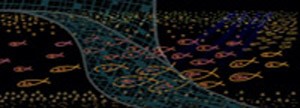GADCAP deals with the development of a GADGET multispecies model in the Flemish Cap and its application for fisheries management in NAFO. As an ecosystem study, the information available for cod, redfish and shrimp, species interactions, growth rates, maturation, mortality rates, space occupancy and recruitment variability will be employed. These populations will be modeled considering also other important components of the ecosystem in other trophic levels. As a fisheries model with management aims, information about fleet, gear types, total catches, age and size distribution of catches by species and spatial distribution will be also a crucial part of the model. On each annual meetings of the Working Group on Ecosystem Studies and Assessment (WGESA), advancements on the GADGET models for the Flemish Cap will be presented. Results from GADCAP will be integrated in a multidisciplinary team, where other lines of work will interact, especially those related with fisheries production potential models and eco-regions delimitation.
The main objective of GADCAP is providing alternative management strategies for the Flemish Cap by increasing the knowledge about joint population dynamic of cod, redfish and shrimp in a context of fishing activity and variable environmental conditions. To do this, the most relevant drivers will be integrated in a multispecies, multiarea and multifleet GADGET model.
Objective 1: Monospecific models
Assemble for cod, redfish and shrimp independent monospecific models considering all landings, biological and oceanographic data and survey indexes of biomass and abundance.
Objective 2: Multispecific model
Combine the three monospecific models to create a unique multispecies model that evaluates the predatory and competitive interactions between species but considering the combined effect of fishing on the different species.
Objective 3: Model projections
Project population dynamic and future state of all the species modeled under different recruitment levels, species interactions and variable fishing pressure.
